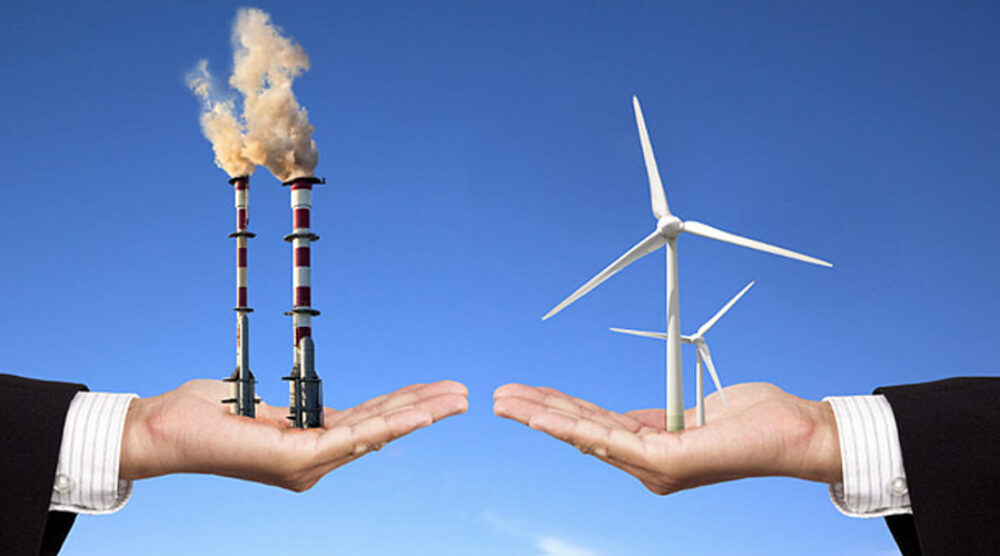How can countries like Indonesia and Australia link the response to the COVID-19 pandemic and response to the impacts of climate change? A long-term sustainable solution to climate change means reducing the amount of carbon being emitted into the atmosphere to a level that is considered safe for the planet and our civilisation. Building back better (See OECD Build Back Better, We Mean Business and Global Compact Network Australia) is vital because business as usual will not lead to a more resilient and inclusive world in the context of climate change. There is increasingly more attention being given to the notion of building back better. Given the imperative net zero emissions under the Paris Agreement it’s important for companies to understand the how the adoption and achievement of zero emissions targets can be aligned with business strategy within economic recovery approaches to the pandemic. Government and business both have a role to play.
Dr Rob Hales from the Department of Business Strategy and Innovation recently took part in a panel of experts for the Collaborative Australia-Indonesia Program for Sustainable Development and Climate Change (CAIPSDCC) webinar series designed to tackle challenges brought on by COVID-19.
During the webinar titled: The impact of COVID-19 on the low carbon future, experts from Indonesia outlined their low carbon development plan which has political support and is integrated into the planning process of Indonesia.
Dr John Hewson, Chair of the Business Council for Sustainable Development Australia and Adjunct Professor at the Griffith Business School, presented at the webinar and stressed that regional carbon markets are gaining momentum and there was a need for a carbon market in Australia in order to be competitive in our region. Rob Hales added that the world is shifting to put a price on carbon and this trend has not decreased as a result of the pandemic.
Dr Hales has been working on science-based targets (SBT) looking at why companies engage in zero emission in collaboration with WWF and United Nations Global Compact. He spoke about the drivers behind businesses working towards a low carbon future during COVID-19 in Australia. The drivers of a low carbon future provide insights for business strategy.
- Decarbonisation policy imperative
Strong national emissions reduction targets and strong sub-national government targets continue to create a policy environment that compels a response from business. Science-based targets (SBT) and the Task Force on Climate-related Financial Disclosures (TCFD) have been pivotal assisting the response of large organisations to carbon risk. Businesses have realised carbon risk has not disappeared during the pandemic. - Clean energy price
Despite the downturn in the implementation solar and wind projects as a result of the pandemic, the long-term trend of increasing competitive advantage towards renewables will continue – especially in progressive countries which are switching from subsidising fossil fuels to renewables. - High emissions companies failing
The share prices in the fossil fuel sector have decreased rapidly during the pandemic. Fossil fuel stocks are volatile during economic disruption. - Sustainable investments
During the pandemic sustainable investments have performed better than other investments. The sustainable investments have experienced far less reduction in their share price compared to fossil fuel investments. - Trend in decentralisation of energy
With the growing competitive advantage of renewables the decentralisation of grid power will continue. Battery storage (electric vehicles and home storage) will change the nature of grid power towards multiple sources power and decentralised storage of power. - Pressure to detoxify air
The pandemic has provided a window on what a low carbon world could look like. Outdoor air pollution by fossil fuels kills approximately 4 million people in the world every year. - Community concern
Climate change remains a high community concern during the Pandemic. In Australia climate change (and events like droughts and bushfires) rank second to the Covid-19 pandemic and associated economic downturn. Prior to the Pandemic climate change raked the number concern in Australia. - Deglobalisation mindset shift
Supply chain impacts from the pandemic has forced companies to refocus on continuity planning. The new global-local agenda in many countries reconfigures the supply chains toward local sources and thus aligns with many sustainability principles. Embedded carbon in the goods we consume is reduced with increased localisation of supply chains. - Emissions reduction and costs
Emissions reduction during the COVID-19 crisis shows large scale government intervention in the economy is possible. Neoliberal governments have had to eat Keynesian humble pie and run up government deficits to aid recovery packages. The practice of treating government debt like a household is increasingly under fire from critics and thus opens opportunities for government to fund climate change mitigation costs to society through recovery strategies. - COP26 delay and reengagement of USA
A delay in COP26 event (Paris Agreement Climate Change Conference) may provide a chance for the USA to engage with the Paris Agreement. The USA elections are in November 2020 and a change of government may lead to a change in global negotiations towards more positive emissions reduction targets at Glasgow (COP26) at the end of 2021.
As part of the Collaborative Australia-Indonesia Program for Sustainable Development and Climate Change (CAIPSDCC) both John and Rob look forward to more dialogue and collaboration on research for low carbon development. Joint research can assist in aim of building back better and progressing climate resilient development in both countries.






